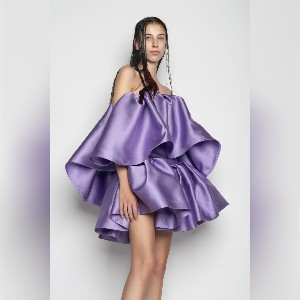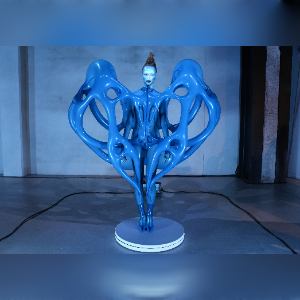Mineral; The Kering Awards
By sora alfatlawi
Returning for its fourth consecutive year is the 2017 Kering Award for Sustainable Fashion. In collaboration with global luxury group, Kering and the London College of Fashion, the award was given to 4 young designers, all showing an ‘exceptional ingenuity and a multidisciplinary approach, by blending science, technology and design’. Participants were required to put forward proposals defined by luxury groups Gucci and Stella McCartney, in order to exhibit innovation and creativity, designed to shape the next generation of sustainable fashion.
The project brief put forward by Gucci requires students to present an alternative view of luxury that considers human wellbeing and natural systems as key drivers for the design, production and communication of fashion. Likewise, Stella McCartney invited students to develop concepts that dissolve boundaries and overcome technical, material and cultural challenges.
This year’s Kering award was presented to four students, Laure Fernandez and Charlie Wilkinson, both earning placements at Gucci, as well as Dianjen Lin and Jennifer Kusowski, respectively earning a place at Stella McCartney.
MA student, Laure Fernandez, winner of the award for innovation & fashion for Gucci, for her project ‘future artisans’, which merges science with sustainable materials, to create a unique method for designing patterns, while also looking at the future of the printing process. The process uses natural, microbial pigments and applies external stimulus, such as sound vibrations, to cause the micro-organisms to expand, forming beautiful, unique coloured patterns.
Likewise, BA(Hons) student Charlie Wilkinson, won the award for her design. Having previously worked with Dr Martens as an accessories design assistant, Wilkinson has won numerous awards for her work and more recently for her work with cork and bio-resin, both lightweight, durable materials, as a sustainable alternative to the structural material – a blend of plastic and leather, in Gucci’s luggage. Additionally, the project tackles the issue of the wear and tear of the outer material. When the structural body of the luggage remains undamaged but the outer layer is worn, consumers are encouraged to renew the outer layer of the luggage with wraps, designed to prolong the lifespan of the luggage.
Chosen for Stella McCartney, Dianjen Lin with 6 years of professional experience across costume/fashion design, photography, art and silver metalwork, impressed with her design for ‘post carbon fashion’. Acknowledging the beneficial relationship between humanity and nature, she designed with an inherent interest in science, technology and ecological ethics – the outcome? Materials that absorb CO2. Lin, has managed to merge algae cultures with fibres, which in its initial results, can produce 4% more oxygen that generated by a tree.
Also for Stella McCartney, ‘Designing Demin for Nature’, by MA Student Jennifer Kusowski, aims to develop the UK’s first fibre shed, a circular system where ‘where textiles are designed, sewn, grown, processed, sold, worn and composted locally, in a specific region’. In turn, it allows the garment to be composted locally in a specific region, allowing for traceability into the origins of the textiles, while working towards removing the use of toxic dyes and synthetic finishes. Kusowski, who has over seven years in the industry as a denim specialist and responsible for the successful renewal of the My First Denim collection for baby Gap, as well as being responsible for designing, developing and sourcing the first-ever organic denim trouser for the baby department.
Established in 2o14, The Kering Award is leading the front of sustainable fashion and helping young designers pioneer into the industry. There is a diverse range of ideas, interests and methods that they explore. For a full list on this years show, as well as next years line up and submission guidelines, find it at The Kering Awards.







